|
Related FAQs: Halichoeres Wrasses, Halichoeres 2, Halichoeres Identification, Halichoeres Behavior, Halichoeres Compatibility, Halichoeres Selection, Halichoeres Systems, Halichoeres Feeding, Halichoeres Disease, Halichoeres Reproduction, Wrasses, Wrasse Selection, Wrasse Behavior, Wrasse Compatibility, Wrasse Feeding, Wrasse
Diseases,
Related Articles: Halichoeres N-Z, The Diversity of Wrasses,
Family Labridae, Cook Islands
Wrasses,
/The Best Livestock for A Marine Aquarium
Genus Halichoeres, Part 1
To:
Part II, Part III,
Part IV, Part V,
Part VI,
Part VII, Part VIII,
Part
IX
|
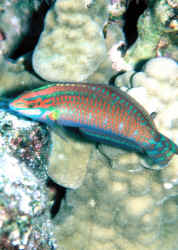
|
|
By Bob Fenner
|
Halichoeres
ornatissimus
|
Seems like all large families have one, super-size
catch-all genus. For the Butterflyfishes, it's Chaetodon, and for
the wrasses, it's the genus Halichoeres. Burgess et al. (1990) list
forty-seven species and there are more (sixty two currently). Confusing
the matter is the typical morass of double and treble invalid
classification of the same species as more than such on the basis of
sexual and developmental differences (which can be quite striking with
some). Many of the members of this genus are good looking, peaceful,
and stay relatively small. Germinal to their keeping is selecting
initially healthy specimens, providing a sand bed for digging and
diving, and assuring their getting their share of the food.
| Halichoeres argus (Bloch & Schneider
1801), the Argus Wrasse. Indo-west Pacific. To almost five inches
in length. This juvenile in Fiji. |
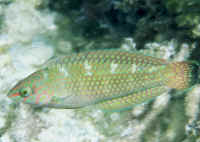
|
Bigger PIX:
The images in this table are linked
to large (desktop size) copies. Click on "framed" images
to go to the larger size. |
|
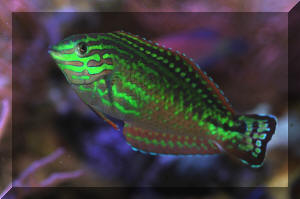
%20MD.JPG)
|
| Halichoeres bivittatus (Bloch 1791), the
Slippery Dick Wrasse (2), is a standard item offered out of the tropical
western Atlantic and an anomaly to me. This fish is neither really very
attractive or relatively hardy in captivity. To almost nine inches in
length. Bahamas, initial phase individual. Changeling and terminal phases
below. |
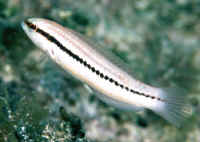 |
|
Halichoeres chierchiae Di Caporiacco 1948,
the Wounded Wrasse (2) is a newer introduction to the hobby from
the tropical eastern Pacific that is gaining popularity. To eight
inches over-all length. Here's a near full-size male in
captivity and a three inch juv. off Mexico's Cabo San Lucas.
Initial phase/female below in Costa Rica.
|
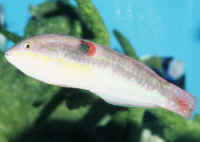 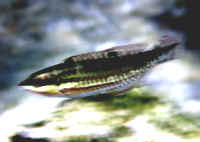
|
Bigger PIX:
The images in this table are linked to large
(desktop size) copies. Click on "framed" images to go to
the larger size. |
|
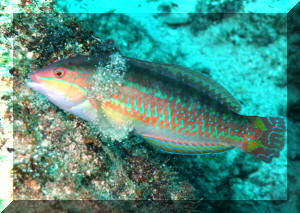
|
To:
Part II, Part III,
Part IV, Part V,
Part VI,
Part VII, Part VIII,
Part
IX
|
|

